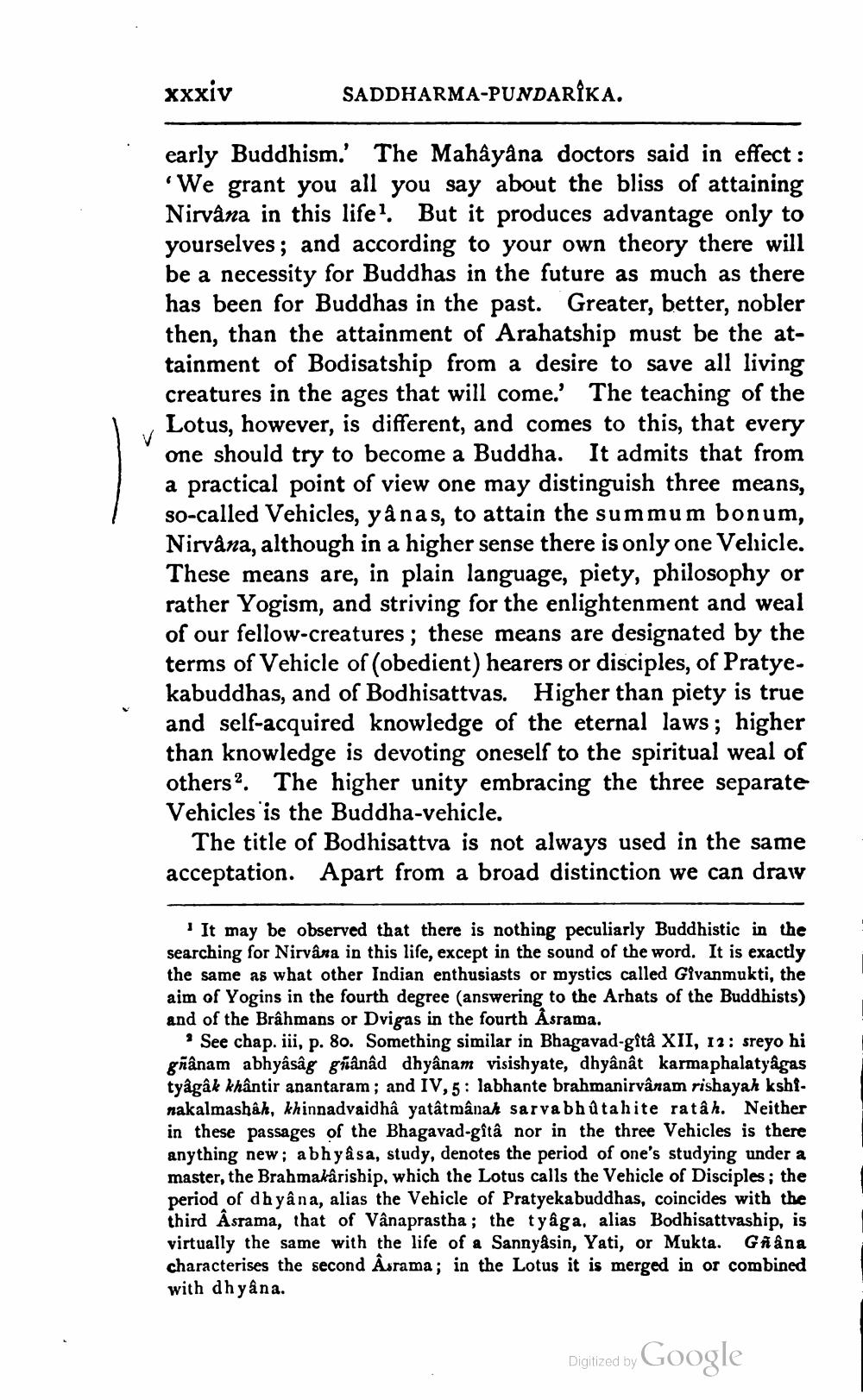________________
xxxiv
SADDHARMA-PUNDARIKA.
early Buddhism.' The Mahayana doctors said in effect : 'We grant you all you say about the bliss of attaining Nirvana in this life?. But it produces advantage only to yourselves; and according to your own theory there will be a necessity for Buddhas in the future as much as there has been for Buddhas in the past. Greater, better, nobler then, than the attainment of Arahatship must be the attainment of Bodisatship from a desire to save all living creatures in the ages that will come. The teaching of the Lotus, however, is different, and comes to this, that every one should try to become a Buddha. It admits that from a practical point of view one may distinguish three means, so-called Vehicles, yanas, to attain the summum bonum, Nirvana, although in a higher sense there is only one Vehicle. These means are, in plain language, piety, philosophy or rather Yogism, and striving for the enlightenment and weal of our fellow-creatures; these means are designated by the terms of Vehicle of (obedient) hearers or disciples, of Pratye. kabuddhas, and of Bodhisattvas. Higher than piety is true and self-acquired knowledge of the eternal laws; higher than knowledge is devoting oneself to the spiritual weal of others. The higher unity embracing the three separate Vehicles is the Buddha-vehicle.
The title of Bodhisattva is not always used in the same acceptation. Apart from a broad distinction we can draw
" It may be observed that there is nothing peculiarly Buddhistic in the searching for Nirvana in this life, except in the sound of the word. It is exactly the same as what other Indian enthusiasts or mystics called Givanmukti, the aim of Yogins in the fourth degree (answering to the Arhats of the Buddhists) and of the Brâhmans or Dvigas in the fourth Asrama.
* See chap. iii, p. 80. Something similar in Bhagavad-gita XII, 12: sreyo hi gñanam abhyâsâg giânâd dhyânam visishyate, dhyânât karmaphalatyagas tyágâk khântir anantaram; and IV, 5: labhante brahmanirvânam rishayah kshinakalmashâk, khinnadvaidha yatâtmânah sarvabhūtahite ratâh. Neither in these passages of the Bhagavad-gitâ nor in the three Vehicles is there anything new; abhyasa, study, denotes the period of one's studying under a master, the Brahmakâriship, which the Lotus calls the Vehicle of Disciples; the period of dhyâna, alias the Vehicle of Pratyekabuddhas, coincides with the third Asrama, that of Vânaprastha; the tyaga, alias Bodhisattvaship, is virtually the same with the life of a Sannyasin, Yati, or Mukta. Għâna characterises the second Asrama; in the Lotus it is merged in or combined with dhyana.
Digitized by Google




